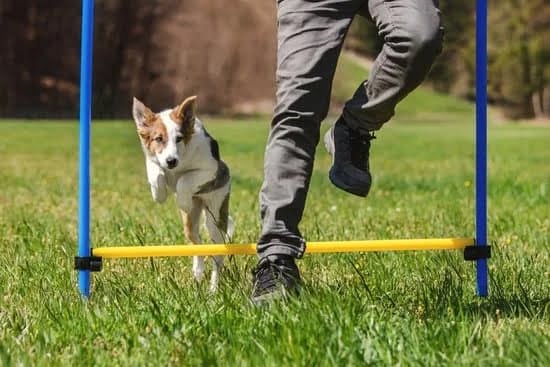Training is an essential aspect of dog ownership, allowing us to shape their behavior and develop a strong bond. However, just like humans, dogs can become tired or even exhausted from training sessions. Recognizing the signs of training fatigue is crucial to ensuring a positive experience for both you and your furry friend. This article will guide you through understanding these signs, allowing you to adjust your training methods accordingly.
Understanding the physical signs that indicate a dog is tired during training is the first step in recognizing fatigue. Dogs may show signs such as heavy panting, slumping or lying down during training sessions, and a lack of energy or enthusiasm. Observing their body language can provide valuable insight into how they are feeling and if they need a break.
In addition to physical cues, there are behavioral indicators that suggest a dog is exhausted from training. They may exhibit a shorter attention span, becoming easily distracted or disinterested in the tasks at hand. Perhaps they start avoiding eye contact or exhibiting restlessness by constantly looking away or sniffing the ground. These behaviors signal that it’s time to reassess your approach and consider giving them some much-needed rest.
Recognizing when a dog’s focus or attention has waned can be another telltale sign of training burnout. If your furry companion seems more interested in their surroundings than following commands or loses interest quickly after starting an exercise, it may be time to take a step back. Maintaining enthusiasm and motivation is crucial for effective training, so always pay attention to any shifts in their level of engagement.
Physical signs of tiredness during training sessions
During training sessions, dogs may display physical signs of tiredness that indicate they are becoming fatigued. Recognizing these signs is crucial to ensure the well-being of the dog and to prevent any further strain or injury. Some physical indicators of tiredness during training include excessive panting, decreased coordination, and lethargy.
Excessive panting is a clear indication that a dog is becoming exhausted during training. Panting helps dogs regulate their body temperature, and when they are working hard or feeling stressed, they may start panting heavily. If a dog starts panting excessively during a training session, it is important to provide them with water and take breaks to allow them to catch their breath.
Another physical sign of tiredness in dogs is a decrease in coordination. A dog that was previously responding quickly and accurately to commands may start stumbling or losing balance when they are fatigued. This lack of coordination can be dangerous for both the dog and the trainer, so it is important to recognize this sign and give the dog adequate rest before further training.
Lethargy is another common physical indicator that a dog is tired during training. When a dog becomes exhausted, they may lose interest in participating in the training session or appear generally unresponsive. They may also exhibit slow movements and reluctance to engage in any physical activity. It is important not to push a lethargic dog further as it can have negative effects on their overall well-being.
Recognizing these physical signs of tiredness during training sessions allows trainers to adjust their approach accordingly and prioritize the health and safety of their dogs. Taking breaks, providing ample rest periods, and ensuring proper hydration are essential for preventing exhaustion and maintaining a positive training experience for both the trainer and the furry friend.
| Physical Signs | Explanation |
|---|---|
| Excessive Panting | Panting heavily to regulate body temperature during training |
| Decreased Coordination | Stumbling or loss of balance during training due to fatigue |
| Lethargy | Lack of interest, slow movements, and reluctance to engage in physical activity |
Behavioral indicators that a dog is exhausted from training
Training can be both physically and mentally demanding for dogs, and it’s important for owners to recognize the signs of exhaustion during training sessions. While physical cues such as panting or lethargy are easily noticeable, there are also behavioral indicators that can indicate a dog’s exhaustion.
One behavioral indicator of training fatigue in a dog is a decreased responsiveness or cooperation. If your usually eager and excited pup suddenly becomes disinterested or reluctant to follow commands, it could be a sign that they are tired. This may manifest as slower response times, hesitation, or even outright disobedience. It is crucial not to mistake this behavior as defiance, as it is likely the result of fatigue.
Another behavioral indicator is an increase in frustration or irritability during training sessions. An exhausted dog may become more easily agitated and display signs of annoyance or impatience. They may bark excessively, show signs of aggression, or become destructive. It’s important to acknowledge these behavioral changes and adjust the training session accordingly to provide necessary breaks and rest periods.
| Behavioral Indicators | Explanation |
|---|---|
| Decreased responsiveness or cooperation | A tired dog may show slower response times or reluctance to follow commands. |
| Increase in frustration or irritability | An exhausted dog might become easily agitated, show signs of annoyance, or display aggression. |
As responsible pet owners, it is essential to pay attention to these behavioral indicators in order to prevent training burnout and maintain a positive experience for our dogs. Pushing a tired canine further can lead to stress, anxiety, and even physical injuries. Understanding when our furry friends are exhausted and need a break is crucial for their overall well-being and success in training.
How a lack of focus or attention can signify training burnout
Training burnout in dogs can often manifest through a lack of focus or attention during training sessions. When a dog becomes tired of training, they may no longer show the same level of engagement and concentration as they did in the beginning. This can be seen through various behavioral cues and actions.
One common sign of training burnout is when a dog starts to become easily distracted during training sessions. They may start sniffing around, looking at other things in the environment, or constantly trying to interact with their owner rather than focusing on the task at hand. Additionally, a dog may start exhibiting signs of disinterest by frequently yawning, stretching, or even lying down during training sessions.
Another indicator that a dog is tired of training is when they begin to exhibit avoidance behaviors. This can include avoiding eye contact, trying to walk away from the training area, or refusing to follow basic commands that they previously knew well. These behaviors are clear indications that the dog’s enthusiasm and motivation for training have decreased significantly.
To address this lack of focus and attention as a sign of training burnout, it is important for owners to reevaluate their approach to training. They should consider incorporating more interactive and engaging activities into their sessions to maintain the dog’s interest. For example, using toys or treats as rewards can help keep their attention focused on the task at hand. Additionally, varying the exercises and tasks involved in training sessions can also help prevent boredom and burnout.
Recognizing a decrease in enthusiasm or motivation during training
One major indicator of a decrease in enthusiasm or motivation is a lack of engagement from the dog. If a dog starts to lose interest, they may become easily distracted or disinterested in the commands being given. They may start to exhibit wandering behavior, sniffing around or looking for other sources of entertainment instead of focusing on the training session. This lack of focus and attention is often a sign that the dog has had enough and needs a break.
Another behavioral indicator of exhaustion from training is resistance or refusal to perform commands that they previously knew well. Dogs may start showing reluctance, such as moving slowly or refusing to follow instructions altogether. This can indicate mental fatigue as the dog’s brain becomes overwhelmed with information and needs time to rest and process.
Additionally, physical cues can also point towards a decrease in enthusiasm or motivation during training sessions. Excessive panting, drooling, excessive scratching, and restlessness are all signs that the dog may be physically fatigued or uncomfortable. Lethargy is another physical cue that indicates tiredness – if a normally energetic pup suddenly looks tired and uninterested during training, it’s time for a break.
To prevent training fatigue and maintain a positive training experience for dogs, it is important to incorporate breaks and rest periods into each session. Breaks allow the dog’s mind and body to relax and recharge before continuing with more exercises. Regularly scheduled breaks can help prevent burnout and keep the dog engaged throughout the entire session.
Identifying physical cues such as excessive panting or lethargy
Physical cues such as excessive panting or lethargy can be strong indicators that a dog is tired of training. As dogs exert themselves physically during training sessions, they may become fatigued and exhibit signs of exhaustion. Recognizing these physical cues is essential in order to ensure the well-being and comfort of your dog.
Excessive Panting
One clear physical cue that a dog is tired from training is excessive panting. During intense or prolonged training sessions, dogs may start to pant heavily as their bodies work hard to regulate temperature and recover from physical exertion. If you notice your dog panting excessively with an open mouth, rapid breathing, or their tongue hanging out, it could be a sign that they need a break.
Excessive panting can also be indicative of overheating or dehydration. It’s important to monitor the environment and indoor temperature during training sessions to ensure your dog’s safety. Providing access to fresh water throughout the session and allowing your dog regular rest breaks will help prevent overheating and dehydration.
Lethargy
Another physical cue of training fatigue is lethargy. If you observe that your normally energetic and enthusiastic dog seems unusually sluggish, uninterested, or lacks energy during training sessions, it may be a sign that they are tired and need rest.
Lethargy can manifest as a lack of enthusiasm towards previously enjoyable activities, slow movements, reluctance to engage in commands or tasks, or even lying down frequently during the session. Pay attention to your dog’s body language and overall behavior during training; if you notice signs of lethargy, it’s important to respect their limits and give them an opportunity for rest and recovery.
Recognizing these physical cues allows you to better gauge your dog’s endurance level during training sessions. By being attentive to signs of excessive panting or lethargy, you can make proactive decisions on when it’s appropriate to take a break or conclude the session, ultimately ensuring your dog’s well-being and maintaining a positive training experience.
Considering the impact of excessive repetition on a dog’s mental state
One of the key factors that can contribute to a dog becoming tired of training is excessive repetition. While repetition is essential for reinforcing new skills and behaviors, it’s important to strike a balance to prevent mental fatigue. Dogs, like humans, thrive on variety and stimulation, so constantly repeating the same exercises or drills can quickly lead to boredom and disinterest.
The danger of monotony
When training becomes monotonous, dogs may start showing signs of disengagement such as reduced focus, decreased motivation, or even avoidance behaviors. These are clear indicators that the dog’s mental state is being affected by the repetitive nature of the training sessions. It’s crucial for trainers to be aware of these signs and take steps to alleviate them before they escalate into full-blown burnout.
Keeping it fresh
To combat the negative effects of excessive repetition on a dog’s mental state, it’s important to introduce variety into training sessions. This can be achieved by incorporating new exercises or adding different elements to existing ones.
For example, if you have been practicing basic obedience commands indoors, take your dog outside for a change of scenery or work on more challenging tasks such as agility exercises. The idea is to keep your dog mentally stimulated and engaged throughout the training process.
Balancing repetition with breaks
In addition to introducing variety into training sessions, it’s equally important to incorporate regular breaks and rest periods. Just like humans, dogs need time to process what they have learned and unwind.
Training sessions should be structured in such a way that allows for short breaks every 10-15 minutes where the dog can relax and decompress. These breaks not only prevent mental fatigue but also give trainers an opportunity to assess their dog’s progress and adjust their training approach if necessary.
By considering the impact of excessive repetition on a dog’s mental state and implementing strategies to prevent burnout, trainers can maintain their dog’s enthusiasm and motivation throughout the training journey. Remember to keep sessions engaging and varied, while also giving your dog ample opportunities to rest and recharge. A mindful approach to training will not only strengthen the bond between you and your furry friend but also create a positive and enjoyable learning experience for both of you.
Evaluating the importance of incorporating breaks and rest periods into training sessions
One crucial aspect of dog training that should never be overlooked is the importance of incorporating breaks and rest periods into training sessions. Just like humans, dogs can become physically and mentally fatigued after extended periods of training. Therefore, it is essential to evaluate and understand the significance of allowing your dog to take breaks during training.
During a training session, dogs exert a significant amount of physical energy, especially if they are learning new commands or complex tasks. Physical signs such as excessive panting, slowing down, or fatigue can indicate that your dog needs a break. If you notice these signals, it’s crucial to pause the training session and give your furry friend time to rest and recuperate.
While physical indicators are essential in determining when breaks are needed, behavioral cues also play a vital role in recognizing the importance of incorporating rest periods into training sessions. For example, if your dog starts exhibiting signs of frustration or disinterest in following commands that they previously mastered, it may be an indication that he or she needs a break from training.
It’s essential to keep in mind that mental exhaustion can be just as taxing as physical exhaustion for dogs; hence regular breaks are necessary.
In addition to preventing physical and mental fatigue for dogs, incorporating breaks into training sessions can actually help enhance learning retention. Studies have shown that taking short breaks during intense training sessions allows dogs to process information better and retain what they have learned. By giving your dog the chance to rest and recharge their brain between each task or command, you can improve their overall comprehension and performance during subsequent training sessions.
Tips for preventing training fatigue and maintaining a positive training experience for dogs
Maintaining a positive training experience for dogs is essential for their learning and overall well-being. To prevent training fatigue and ensure a positive experience, dog owners can follow these helpful tips:
- Set realistic expectations: It is important to have realistic expectations when it comes to training your dog. Dogs, like humans, have limits and can become tired or overwhelmed. Set achievable goals and break down the training into smaller sessions to avoid overwhelming your furry friend.
- Use positive reinforcement: Positive reinforcement is a powerful tool in dog training. Rewarding your dog with treats, praise, or playtime when they show desired behaviors encourages them to stay motivated and engaged during training sessions.
- Keep training sessions short: Dogs have relatively short attention spans, especially when it comes to training. Keeping training sessions short but frequent can help prevent boredom or burnout. Aim for multiple shorter sessions throughout the day rather than one long session.
- Vary the activities: Incorporating different activities into your dog’s training routine can help keep them engaged and prevent monotony. Mix up obedience exercises with fun games or interactive toys to make the training experience more enjoyable for both you and your furry companion.
- Provide mental stimulation: Mental stimulation is just as important as physical exercise for a dog’s overall well-being. Engage your dog in puzzle toys, scent work, or other mentally stimulating activities outside of formal training sessions to keep their minds active and prevent mental fatigue.
- Take breaks and listen to your dog: Pay attention to your dog’s body language during the training session. If you notice signs of fatigue such as excessive panting or decreased focus, take a short break or end the session altogether. Remember that breaks are not a sign of failure but rather an opportunity for your dog to rest and recharge.
By following these tips, you can help prevent training fatigue and maintain a positive training experience for your beloved pet. Remember that every dog is unique, and it’s important to tailor the training approach to their individual needs. With patience, consistency, and a mindful approach, you can strengthen the bond with your dog while enjoying the process of training.
Conclusion
In conclusion, recognizing the signs of training fatigue in your dog is crucial for maintaining a positive training experience and strengthening the bond between you and your furry friend. By understanding the physical and behavioral indicators of exhaustion, such as excessive panting, lethargy, and a decrease in focus or enthusiasm, you can adjust your training approach to ensure that it remains enjoyable for both you and your dog.
It is important to consider the impact of excessive repetition on a dog’s mental state. Dogs, like humans, can become bored or burnt out from too much repetition. Incorporating variety into their training sessions can help keep them engaged and motivated. Additionally, making use of breaks and rest periods during training sessions allows your dog to recharge both physically and mentally.
To prevent training fatigue, it is essential to prioritize your dog’s well-being. This means paying attention to their energy levels and adjusting the intensity and duration of the training accordingly. Being mindful of their limits can help prevent burnout and allow for a more positive overall experience.
By incorporating these mindful training practices into your routine, you not only strengthen the bond with your dog but also create an environment that promotes learning and growth. Remember that training should be a fun activity that benefits both you and your pet. With patience, understanding, and consideration for their limits, you can create a positive training experience that deepens the connection between you and your beloved companion.
Frequently Asked Questions
Do dogs get tired of training?
Dogs can get tired of training, just like humans can get fatigued from prolonged mental or physical activity. While dogs generally enjoy the attention and mental stimulation that training provides, it’s important to recognize when they are beginning to lose interest or become exhausted.
Signs of fatigue during training may include a decrease in enthusiasm, lack of focus or responsiveness, excessive panting, yawning, or seeking to end the session prematurely. Recognizing these signals and providing appropriate breaks and rest periods can help prevent your dog from burning out and maintain their engagement and enjoyment in training.
How do you know when your dog is tired of playing?
It is essential for dog owners to be observant and understand their pet’s behavior cues to know when they are tired of playing. While some dogs may naturally have higher energy levels than others, signs that your dog has had enough playtime could include decreasing enthusiasm during the game (e.g., less wagging tail or reduced excitement), decreased interest in toys or play behaviors, seeking solitude or refusing further interaction.
Additionally, if your dog starts showing signs of physical exhaustion such as heavy panting, slowed movements, or lying down frequently during playtime, it may be an indication that they need a break. Paying attention to these signals allows you to respect your dog’s limits and ensure they don’t overexert themselves.
How long should training last for a dog?
The duration of training sessions for dogs depends on various factors such as their age, breed, individual temperament, and the complexity of the tasks being taught. In general terms though, short but frequent training sessions tend to be most effective compared to long exhaustive ones. Young puppies typically have shorter attention spans than adult dogs and require shorter sessions ranging from 5-10 minutes several times a day.
As dogs mature and develop better focus and stamina, training sessions can gradually extend between 15-30 minutes once or twice a day while ensuring shorter breaks interspersed throughout. However, it’s crucial always to watch for any signs of fatigue or disinterest and adjust the training duration accordingly. Remember, quality over quantity is key in dog training, and ending on a positive note with rewarding experiences boosts their motivation to learn.

Welcome to the blog! I am a professional dog trainer and have been working with dogs for many years. In this blog, I will be discussing various topics related to dog training, including tips, tricks, and advice. I hope you find this information helpful and informative. Thanks for reading!





